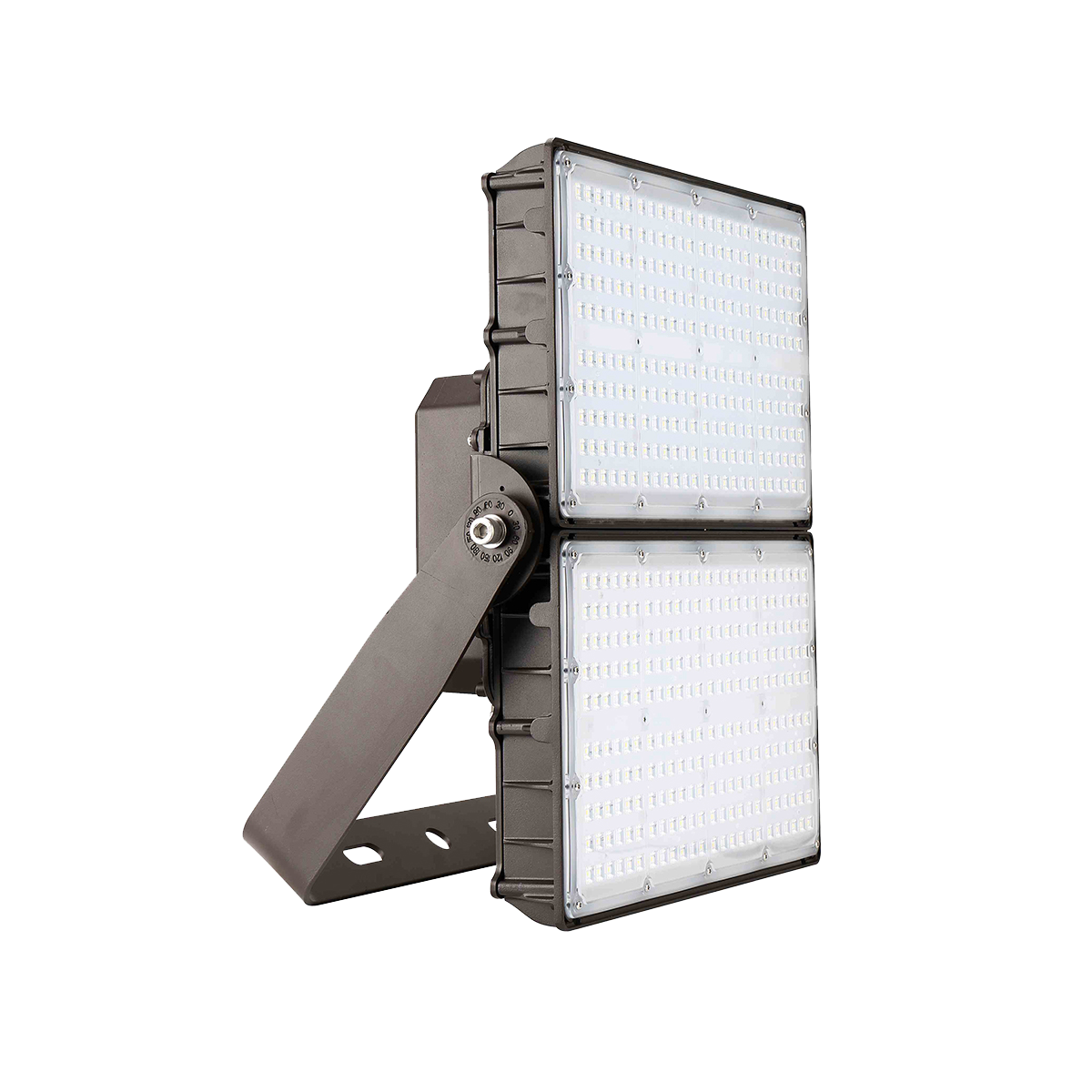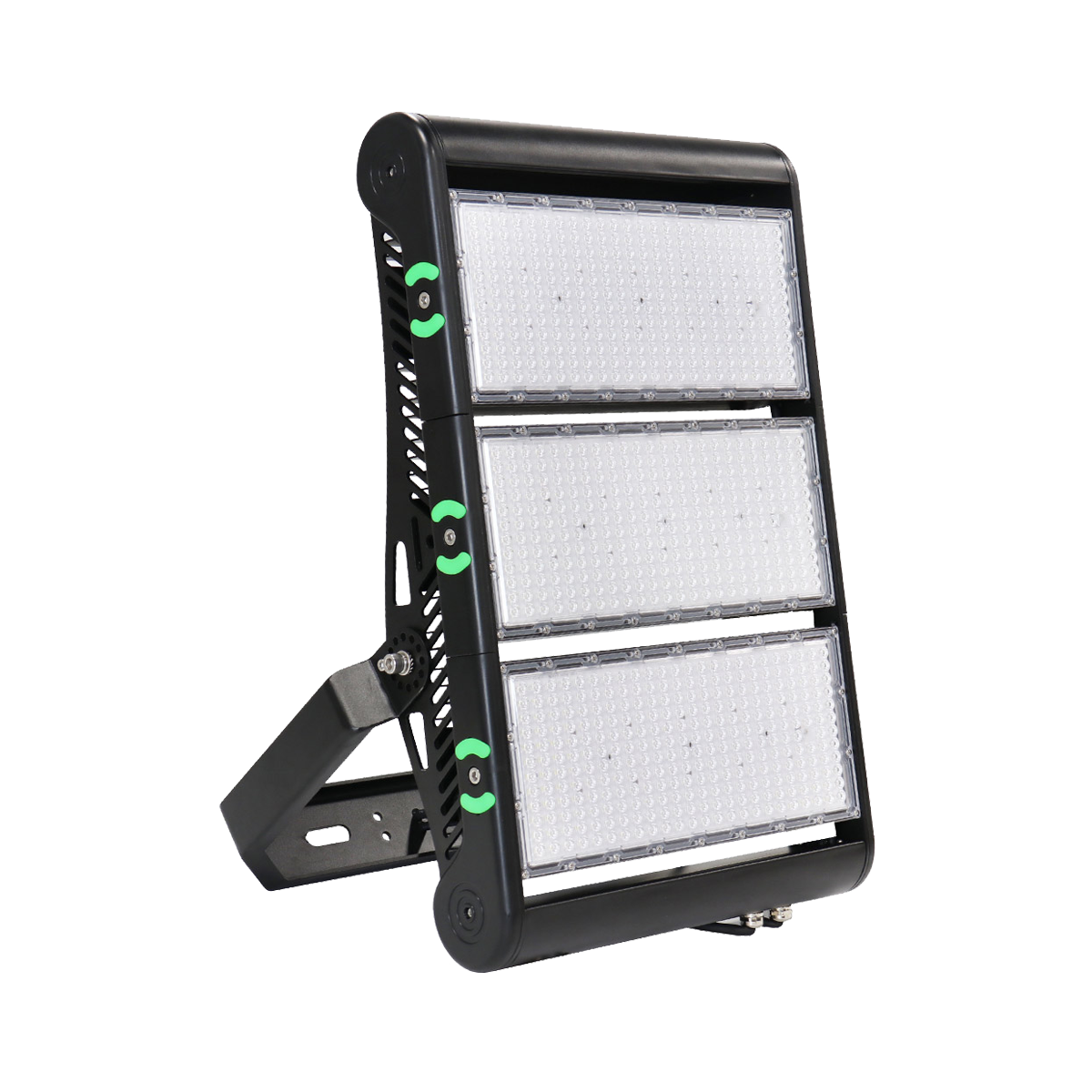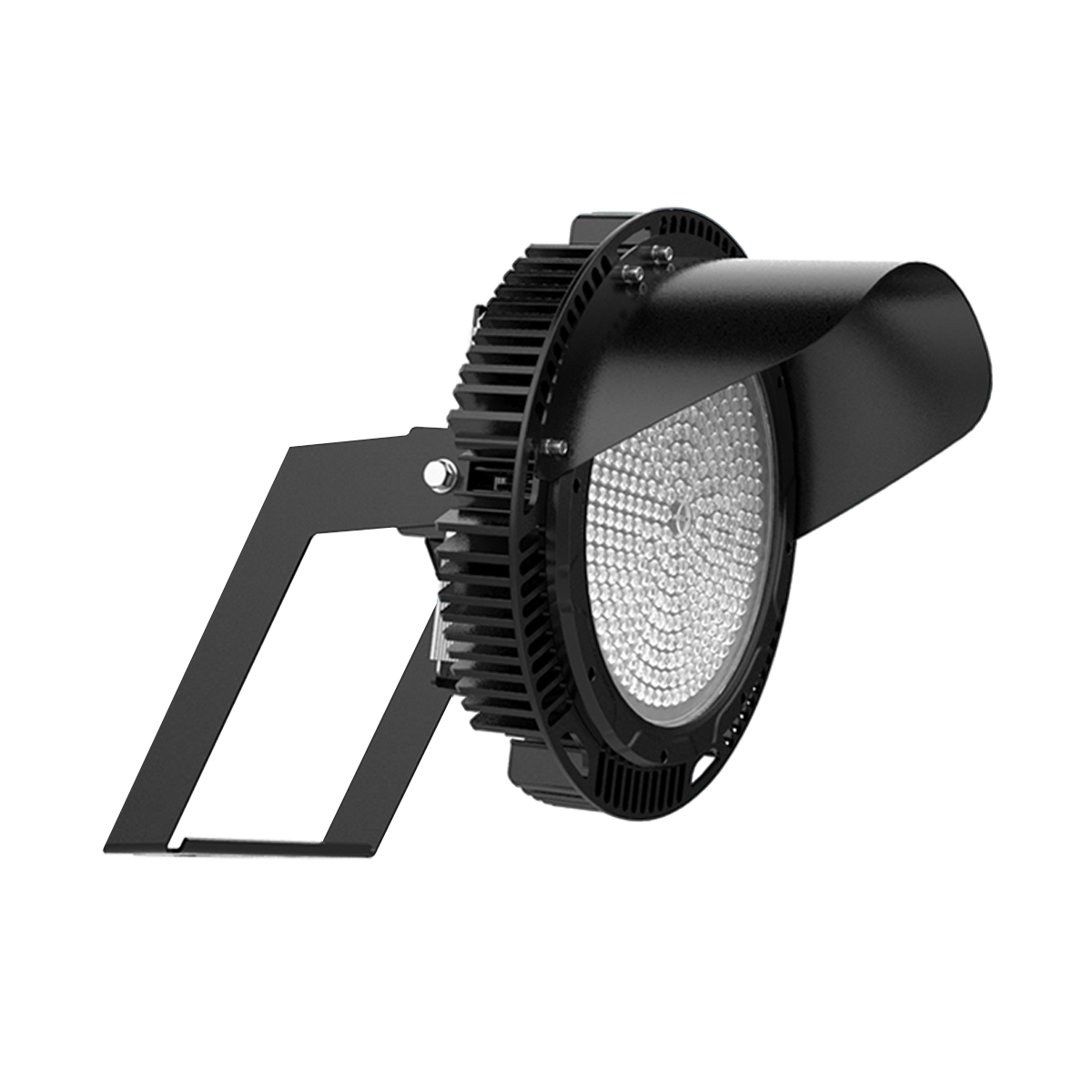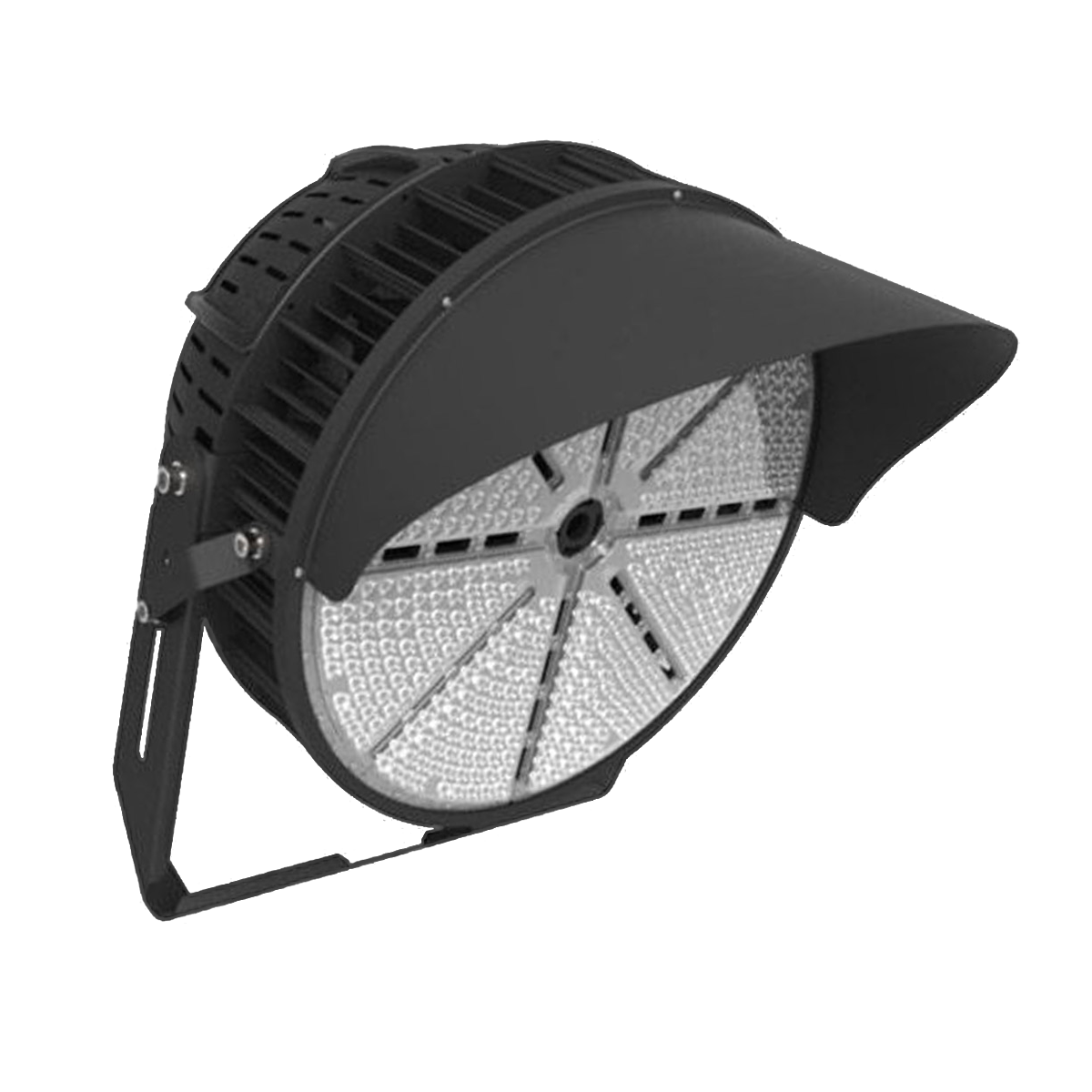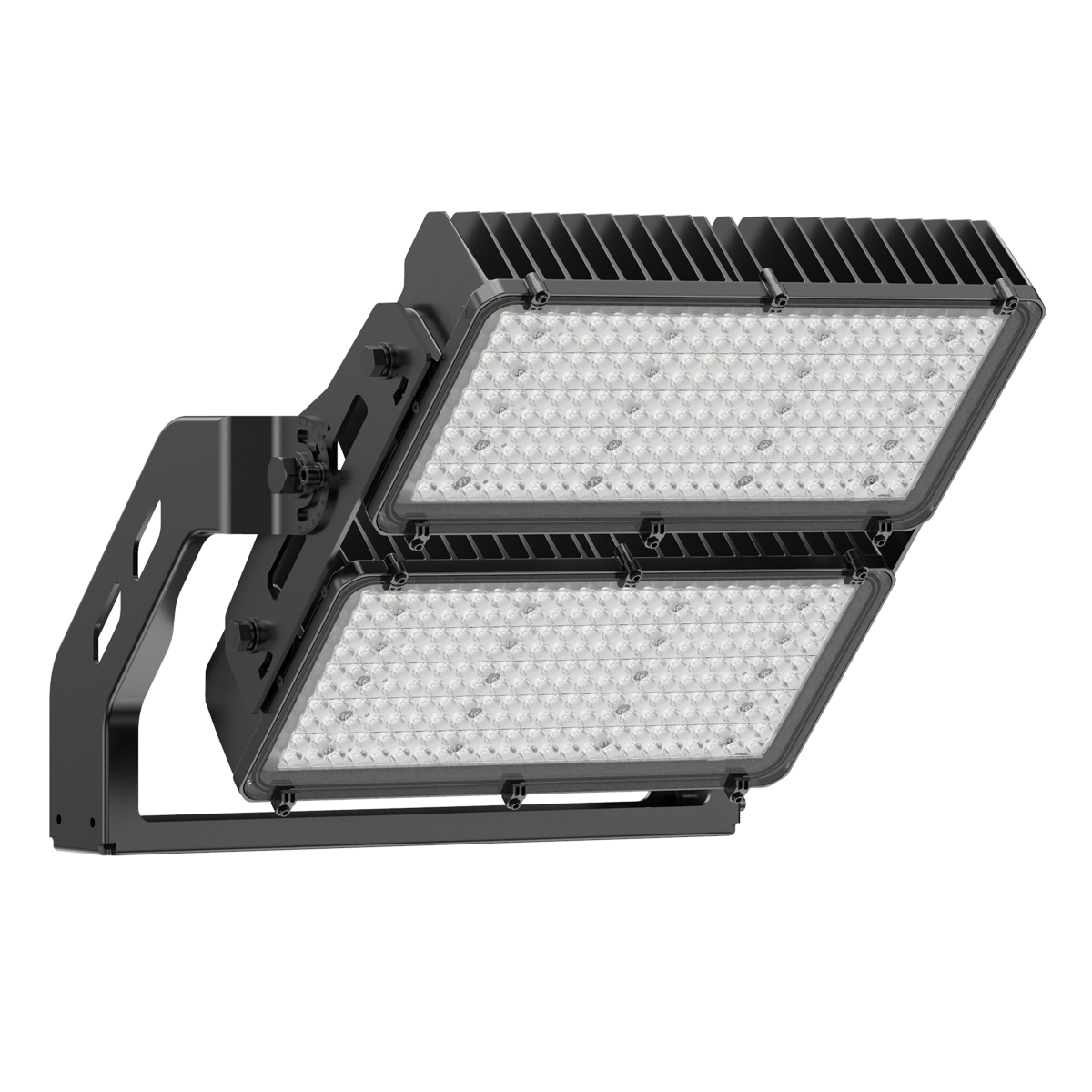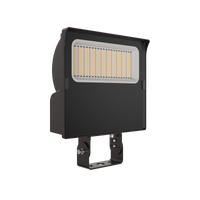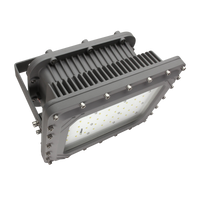High Power & Stadium Flood Lights
Ensure safety & visibility around your facility with LED flood lights built for outdoor performance. High lumen output, commercial-grade build, and field-adjustable color temperature and wattage. Order yours today.
Common Questions About Stadium Lights
How many lights will I need for my sports field?
It depends on the size of your field, pole height, and the level of play. Here are some general examples:
- Community/Youth Fields (Soccer, Baseball, Multi-use): Typically 4–6 poles with 2–3 fixtures per pole, for a total of about 8–18 lights.
- High School Football/Soccer Fields: Usually 4–6 poles with 4–6 fixtures per pole, for a total of 16–30 lights.
- College or Semi-Pro Fields: Often 6–8 poles with 6–8 fixtures per pole, for a total of 36–64 lights.
- Professional Stadiums: Can require 8–12 poles with 10–20 fixtures per pole, totaling 80–200+ lights, depending on broadcasting and competition requirements.
Every field has unique requirements, so we recommend a free photometric layout. This ensures you’ll have the right number of lights in the right places for safe play and compliance with standards. Request one today.
What pole height do I need?
Pole height depends on the size of your field, the level of play, and how many fixtures you’re installing. Here are some common examples:
- Community/Youth Fields (Soccer, Baseball, Multi-use): Poles are typically 30–50 ft tall. Lower heights work for smaller fields where light coverage demands are less intense.
- High School Football/Soccer Fields: Poles are usually 40–70 ft tall, with most fields using 50–60 ft poles for balanced coverage and reduced glare.
- College or Semi-Pro Fields: Pole heights range from 60–90 ft, allowing more fixtures to be mounted higher up for even distribution across larger playing surfaces.
- Professional Stadiums: Poles (or high-mast systems) are often 80–150 ft tall, designed to meet strict broadcast-level standards and minimize shadows on the field.
Every field layout is different, so the best height combines fixture optics + pole spacing + aiming angles. We can provide a lighting design to make sure your project hits the right balance—request a free lighting layout today.
Will these lights reduce glare and light spill into surrounding areas?
Yes. Our stadium light fixtures are designed with precision optics to minimize glare and direct light only where it’s needed. Visors and shields are also available to meet local light pollution requirements.
How do LED stadium lights compare to metal halide?
Because LEDs deliver higher lumen output and better beam control, you can often replace a 1500–2000W metal halide fixture with a 600–1200W LED fixture—while using 30–50% fewer fixtures overall. That means lower installation costs, reduced energy bills, and far less maintenance.
LED stadium lights also turn on instantly—no warm-up/restrike period is required.
What is the expected lifespan and warranty on our LED stadium lights?
Our stadium flood lights are rated for 50,000–100,000+ hours of use, depending on the model. That’s more than 10 years under normal operating conditions. We also back our fixtures with a minimum of 5 years on the warranty for peace of mind.
Do utility rebates apply to stadium lighting?
In many areas, yes. Most of our stadium lights are DLC-listed, making them eligible for energy rebate programs. We can help you determine what rebates are available in your region. Learn more about utility rebates, and get in touch with us to find out if your lighting project qualifies.


